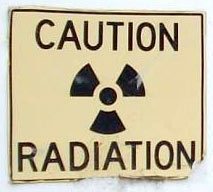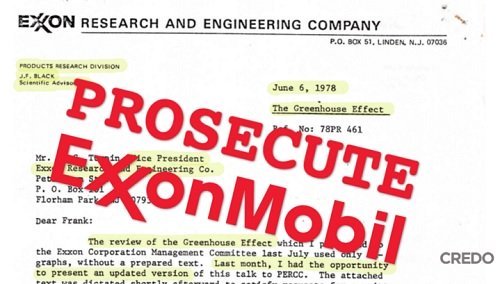Stuart Jeanne Bramhall's Blog: The Most Revolutionary Act , page 1132
November 7, 2017
How Mammograms Increase Cancer Risk
The American Cancer Society defines breast cancer as a “malignant tumor that starts from the cells of the breast.”
The breast is made up of milk glands and fatty tissues, and cancer can occur in any of these tissues. Cells in our bodies are constantly reproducing, and when they start to reproduce at an abnormal rate, they cause a tumor to form.
If cells from a malignant tumor enter the lymphatic system they can infect other tissues, this is termed as metastasizing.
Breast Cancer Risk Factors
Breast cancer risk increases with age and genetics also play a large part. Certain mutagenic tendencies can be inherited, but there are also some lifestyle factors that affect the risk. These include the use of artificial hormones (oral contraceptives or hormone replacement therapy), exposure to radiation, frequent alcohol use, poor diet, toxic overload, obesity and lack of exercise.
Another risk factor is breast density. Women with dense breasts are more likely to develop breast cancer because they have less of the lower risk fatty tissue and more of the higher risk glandular tissue [1]. This dense tissue also makes it more difficult to detect abnormalities using mammograms.
Detection Using Mammograms
Increased awareness, self examinations and technological advances may have contributed to the dramatic increase in the number of breast cancer cases in the United States in recent years.

The ability of mammograms to detect the development of cancer increases as women get older [2], although many women use their perceived risk factor to determine whether they should get regular mammograms or not [3].
Mammograms are difficult even for medical practitioners to read and interpret, and while they do help detect some breast abnormalities, they might actually be increasing the occurrence of breast cancer [4].
Did you know that mammograms may cause breast cancer?
Recent research has shown that repeated exposure to mammograms may act as an independent risk factor for breast cancer. While many medical experts still recommend regular mammograms, which take an x-ray like photograph of the breast, to detect small tumors, opposition to the practice is growing.

It is worthwhile to consider that ionizing radiation has decreased from 5-10 rads in the 1970s to 1 rad today. According to Dr. Frank Rauscher each 1 rad of exposure increases breast cancer risk by one percent, which could become significant over many years of exposure.
This combined with the fact that mammograms do not detect all tumors, and with the fact that mammograms result in biopsy testing, even for benign lumps, make mammography an expensive (financially and in terms of cost to your health) and unreliable option for detecting breast cancer.
Johns Hopkins Bloomberg School of Public Health in Baltimore, evaluated breast cancer mortality statistics in a group of women following five annual mammograms starting at various ages, and found: Women who underwent five mammograms between the ages of 24 and 29 would have an additional 26 breast cancers per 10,000 women due to the radiation. Mammograms between the ages of 30 and 34 would produce an excess of 20 additional cancers and, between 35 and 39, an additional 13 cancers.
You have options
Tumors that grow in the breast are fed by blood vessels generated by the cancer, this means that those blood vessels are not controlled by the automatic nervous system like the rest of the blood vessels in the breast. A non-invasive and non-squishing method for detecting masses in the breast is available.
This method, called thermography, uses thermal imaging to detect “hot spots” in the breast. Thermographic detection of these spots is more reliable than mammography because the blood flow pattern changes long before the tumor is large enough to be detected by x-ray.

This early detection allows patients to more closely monitor their breasts and implement lifestyle changes that could keep the tumor from growing or even give them time to heal themselves completely before the tumor becomes unmanageable [5]. A positive thermography should be seen as an opportunity, and even a nudge toward, serious preventative measures.
New research is constantly being done and new technology constantly developed to detect and treat breast cancer. You can’t control all of your risk factors, like age, gender or genetics, but you can have a serious influence on risk factors from your diet, environment, exercise regime and mammograms.
I have been against the use of mammograms for over 10 years and truly believe that the radiation may induce the proliferation of cancerous cells. Thermography has come a long way and is a much safer way in my opinion to have the breasts screened. I recommend going to OmniBody Scan for more information or to find a practitioner in your area. The OmniBody Scan is a liquid nitrogen camera that uses sensitive medical infrared lenses to detect temperature variations in the breast tissue. And, it does this without the harmful effects of radiation. . .
[image error]

California Proposes Armored Cars to Transport Pot Tax
[image error]
By MICHAEL R. BLOOD, Associated Press
LOS ANGELES (AP) — California should use armored cars to transport hundreds of millions of dollars in cash tax payments expected next year with the state’s legal marijuana market, the state treasurer said Tuesday.
The state on Jan. 1 will enter a new era with cannabis when recreational sales become legal and join the long-standing medical industry in what will become the largest U.S. legal pot economy.
But the new market estimated to grow to $7 billion annually has a troubling flaw: Marijuana remains illegal under federal law, so most banks won’t do business with pot growers, manufacturers or retailers. That means marijuana companies typically operate only in cash, including their tax payments that will be 15 percent of sales to the state of California.
State Treasurer John Chiang formed a task force to work on a solution for gathering the money because the state expects to collect hundreds of millions of dollars from pot sales next year.
The armored car tax collection solution came about amid fears that operators carrying large bags of cash could be targets for theft and create problems for the state workers collecting and counting the money.
via California proposes armored cars to transport pot tax money
[image error]

The Latest: US will continue participation in climate talks
*
*
Trigg Talley, the U.S. deputy special envoy for climate change, told delegates at the opening of the U.N. climate talks in Bonn, Germany, on Monday that “we will continue to participate in international climate change negotiations and meetings, including ongoing negotiations related to guidance for implementing the Paris agreement.”
 Protestors demand the implementation of the climate change convention in Bonn, Germany, Saturday, Nov. 4, 2017. The Climate summit starts Monday Nov. 6, in Bonn. (Roland Weihrauch/dpa via AP)
Protestors demand the implementation of the climate change convention in Bonn, Germany, Saturday, Nov. 4, 2017. The Climate summit starts Monday Nov. 6, in Bonn. (Roland Weihrauch/dpa via AP)
BONN, Germany (AP) — The Latest on global climate change talks in Bonn, Germany (all times local):
4:25 p.m.
A senior U.S. diplomat says Washington will continue to take part in talks about implementing the Paris climate accord, despite President Donald Trump’s threat to pull out of the pact.
Trump announced in June that the United States will withdraw from the 2015 Paris agreement unless he can get a better deal for the United States.
Trigg Talley, the U.S. deputy special envoy for climate change, told delegates at the opening of the U.N. climate talks in Bonn, Germany, on Monday that “we will continue to participate in international climate change negotiations and meetings, including ongoing negotiations related to guidance for implementing…
View original post 559 more words
[image error]

Spinsterhood: The Plight of Women Intellectuals
Spinster: Making a Life of One’s Own
Kate Bolick
Broadway Books (2015)
Book Review
In Spinster, the author describes her personal journey navigating the conflict many female intellectuals experience between fully developing their creative potential and succumbing to intense social pressure to marry and have children. Most of the book explores the lives of five significant role models – novelist and playwright Neith Boyce (1872-1951), short story writer and journalist Mae Brennan (1917-1993), social reformer Charlotte Perkins Gilman (1860-1935), poet Edna St Vincent Millay (1892-1950) and novelist Edith Wharton (1862-1937). Tracing the the lives of all five was invaluable to Bolick in her struggle to meet her sexual and romantic needs without making the all-engulfing commitment of marriage and motherhood.
Interwoven among these narratives are important historically data revealing the dramatic change in women’s lives over the last 200 years. For me these sociological pearls were the most interesting aspect of the book.
For example, prior to 1900 the age of consent (for sexual activity) was 10-12 in most states (7 in Delaware), something early feminists campaigned to change to 16-18.
In 1890, 34% of women lived as single women; in 1960 17%; and in 2013 53%. This recent increase in spinsterhood results from a doubling of divorce rates between 1966 and 1979. The divorce rate peaked in 1981, with women seeking most of the divorces. This coincided with their ability to access previously all-male trades and professions. This, in turn, greatly improved a woman’s ability to survive financially outside of marriage.
I was fascinated to learn about “family limitation” – a practice American women engaged in roughly 100 years before the availability of formal birth control. Between 1600 and 1800, married women got pregnant every two years until they died or reached menopause. During this period, average family size was 8.02 children. By 1900, this average had dropped (mainly due to sexual abstinence) to 4 children – by the Great Depression, it had dropped to 3 children. Between the late forties and the late sixties, it rebounded to 4 children, and since the 1970s it has remained at 1-2 children.
[image error]

November 6, 2017
Parkinson’s Disease: Could Pesticides Be a Cause?
[image error]
Parkinson’s disease (PD) is a movement disorder that generally impairs speech and motor skills and is characterized by tremors and muscular rigidity. There is still a lot to learn about the symptoms and effects of Parkinson’s disease, but recently, a new study concluded with interesting results.
How Is Parkinson’s Disease Contracted?
There are many forms of Parkinson’s disease that appear to be idiopathic, meaning doctors aren’t sure of the causes. Some cases are linked to drug toxicity, medical disorders, or head trauma. The latest observation that medical scientists are exploring is a possible link between pesticides and Parkinson’s Disease.
According to new research [1] into the causes of Parkinson’s Disease, two specific insecticide classes were cited as significantly associated: organochlorines and organophosphorus compounds. While the research isn’t exhaustive or definitive, the results compiled thus far are enough to warrant closer examination by the medical community.
via Parkinson’s Disease: Could Pesticides Be a Cause?
[image error]

ExxonMobil Has A History Of Hiding Its Knowledge On Climate Change Science
*
*
“ExxonMobil shareholders have filed a class-action lawsuit against the company, alleging it misled its investors and the public by failing to disclose the risks posed to its business by climate change.”

ExxonMobil has for years been acting like the cigarette companies of old by pretending to the detriment of the American peoples that climate change worries are overstated. Just as cigarettes have killed prematurely many Americans as well as lowering the quality of their lives with ill health, companies like ExxonMobil have been doing likewise. Only the repercussions from not facing the reality of climate change will dwarf what occurred with the tobacco industry’s campaign to deny the potential harm to humans from cigarette smoking.
Even the ExxonMobil stockholders have filed suit against it because of the companies’ history of misleading the public about what their own scientists warned their executives about this issue of climate change.

As per a 8/23/2017 the Verge report by Rachel Becker, “For decades, the oil and gas company Exxon Mobil has waged a public-facing disinformation campaign about human-caused climate change — even as the company’s…
View original post 1,123 more words
[image error]

Total Gamma Radiation 2017.6 Year to Date USA by Bob Nichols – Know your RAD Number! Check the Table of Poisoned American Cities
*
*
All nuclear reactors leak all the time – present radiation risk by city.
 All Reactors Leak All The Time
All Reactors Leak All The Time
RADS ACROSS AMERICA -The Table of Poisoned American Cities and Ten Years of Annual US Radiation Measured Totals


READ the Total Gamma Radiation 2017.6 Year to Date USA article and search the sortable Table of Poisoned American Cities article here.
Thank you, Bob Nichols!
Source: Bob Nichols, Veterans Today
Total Gamma Radiation 2017.6 Year to Date USA
Copyright by Bob Nichols © 2017: Reproduce and distribute with full attribution to Bob Nichols.
Total Gamma Radiation 2017.6 Year To Date USA – RADS ACROSS AMERICA – Charts Maps and Tables …
Here, Watch this linked video, with charts, maps and tables, then Share With Your Smart Friends and Have Meaningful Conversations about Your Radiation This Week and the Table of Poisoned American Cities. Are you in or near one? DodgeTheRadsNow! DodgeTheRadSnow!

Bob Nichols is a Project Censored Award winner, a former correspondent for the San Francisco Bay…
View original post 134 more words


Blanket radiation checks on Fukushima rice under debate
*
*
Talking of “safe” radiation levels in food is a lie – there is no safe level.

FUKUSHIMA – Blanket radiation checks on rice produced in nuclear disaster-hit Fukushima Prefecture have come under debate because no rice with radiation exceeding the safety limit has been found in recent years.
Some people, including producers, in the prefecture call for continuing the current system because there are consumers who still avoid Fukushima produce. But the blanket checks are costly and require a lot of manpower.
The prefectural government hopes to decide by year-end whether to change the radiation checks, starting with rice that will be harvested next year, officials said.
The blanket checks were introduced after many parts of the prefecture were contaminated with radioactive substances released because of the 2011 nuclear disaster at Tokyo Electric Power Company Holdings Inc.’s Fukushima No. 1 power plant.
Fukushima rice is put through radiation checks bag by bag before shipment. The safety limit is set at 100 becquerels per 1 kg of…
View original post 304 more words


November 5, 2017
Libya, Syria, Ukraine – Same Playbook, Same Puppet Masters
*
*
Geopolitics becomes a lot easier if we can discern repeating patterns. For example, the common thread through the crises in Ukraine, Libya and Syria is a clever but ruthless playbook of regime-change.
Geopolitics becomes a lot easier if we can discern repeating patterns. For example, the common thread through the crises in Ukraine, Libya and Syria is a clever but ruthless playbook of regime-change. This stratagem of toppling governments while appearing noble should perhaps be called the “geopolitics of crocodile tears.”
There were times in history when a powerful country would simply invade the weaker ones. Now the elites resort to elaborate Hollywood-style scripts brimming with inspiring heroes, sob stories and altruistic efforts.
Here are the simple facts: Libya and Syria were a tad bit too independent and successful, and thus have been targeted by globalists for a long time. Ukraine, which borders Russia, is a treasured piece on the geopolitical chessboard – get Ukraine and Crimea, you weaken Russia immensely.
The fundamental ploy in Libya, Syria and Ukraine was the same: rile up the population and then stage a coup in…
View original post 1,498 more words


Thousands of Basque protesters take sides in Catalonia dispute
*
*
More than 40,000 people have rallied in the Basque city of Bilbao in anger at Spain’s direct rule of Catalonia. Basqueland, which has its own separatist movement, also enjoys regional autonomy under the Spanish constitution.
More than 40,000 people have rallied in the northern Spanish city of Bilbao in anger at Spain’s direct rule of Catalonia. The Basque Country region has its own separatist movement which for decades turned bloody.

Protests against Madrid’s handling of the Catalan crisis spread to another Spanish region on Saturday, as the streets of the northern city of Bilbao in the Basque Country were awash with protestors waving umbrellas.
According to the regional paper Naiz, some 44,000 people took part in the rally, which was called by several Basque Country pro-independence groups, the ultra-left wing party Podemos’ regional branch and several labor unions.
Read more: Catalonia: ‘Rajoy will not make concessions to anyone’
History rhymes
The Basque region has, until recently, seen decades of violence by the paramilitary group ETA which left some 850 people dead. ETA surrendered its weapons earlier this year, effectively ending its campaign of terror, after…
View original post 463 more words


The Most Revolutionary Act
- Stuart Jeanne Bramhall's profile
- 11 followers








